| << Chapter < Page | Chapter >> Page > |
The composer has indicated by the time signature that 6/8 and 3/4 will alternate. This does not mean that they will alternate every measure, however. Each measure will have the same number of eighth notes but the pulse and the beat patterns will change. The following beat patterns are suggested for this passage.
| Measure 1 | 2 | 3 | 4 | 5 | 6 | 7 | 8 | 9 | 10 |
| Pattern 2 | 2 | 2 | 3 | 2 | 3 | 3 | 2 | 2 | 2 |
One must look inside the score to determine the correct pulsation and beat pattern. A measure by measure look at the music to explain the patterns chosen above may be helpful to the conductor in examining future scores with similar problems.
| Measure | 1 | The eighth note rest followed by two eighth notes clearly denotes 6/8 (two beats). |
| Measure | 2 | The ordering of the beats in the accompaniment suggests 6/8. Also, the rests in the choral parts are notated in the manner one expects in 6/8. |
| Measure | 3 | The text stress indicates 6/8. The words -pare and ye are to be equally stressed; 3/4 would not get this desired effect. |
| Measure | 4 | The notation and stress indicate 3/4. |
| Measure | 5 | Clearly a 6/8 measure. |
| Measure | 6 | This measure must be conducted in three. The key to the decision is the accompaniment rather than the choral parts. The accompanist would have extreme difficulty placing the third beat of the measure if the measure was conducted in two. |
| Measure | 7 | The text stress suggests that three beats will be best. The unstressed second syllable of level would receive an accent in 6/ 8. The accompaniment also indicates 3/4. |
| Measure | 8 | For the same reason this measure is in 6/8. The word desert should receive two pulses rather than a syncopation in 3/4. |
| Measures | 9, | Both measures use 6/8. Indications in both the choral parts and |
| 10 | accompaniment are clear. |
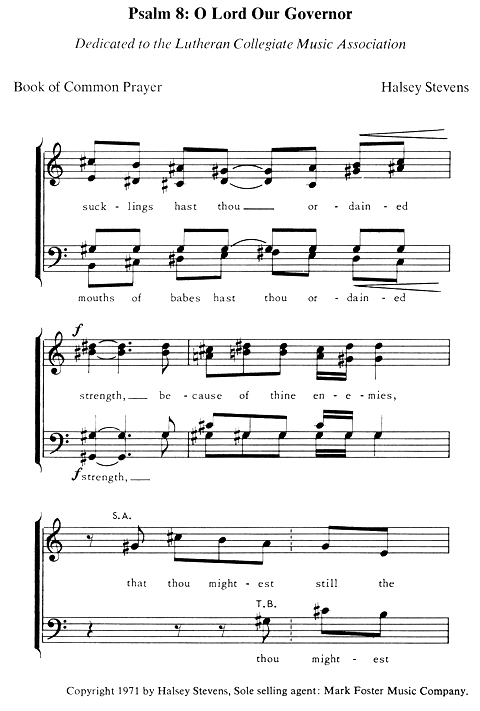
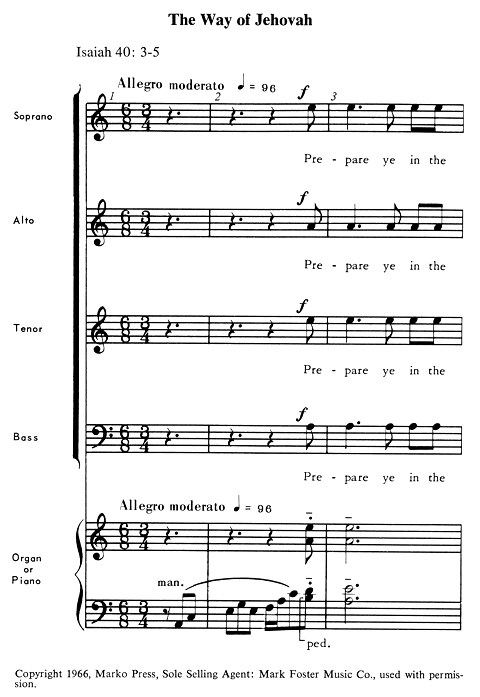
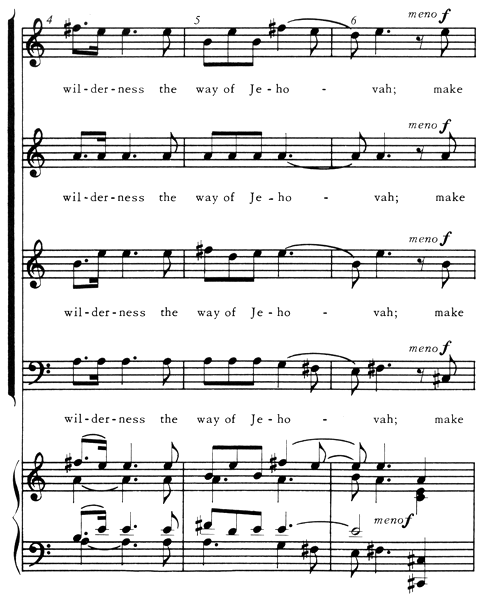
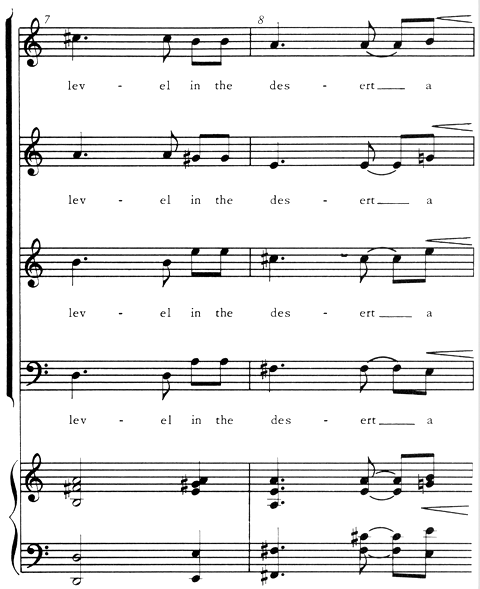
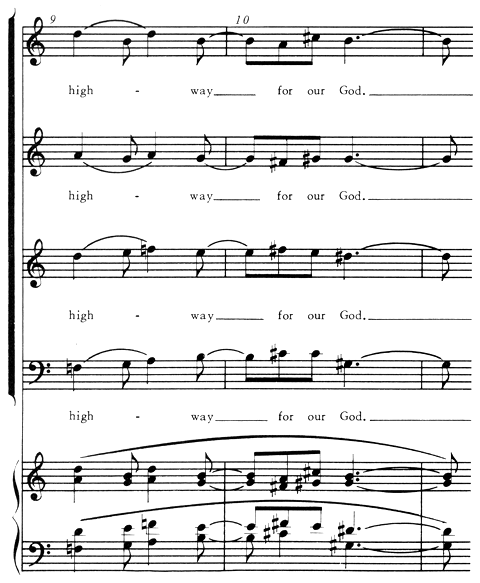
THE WAY OF JEHOVAH, by Halsey Stevens, Copyright 1966 (Renewed) Malcolm Music (BMI), a division of Shawnee Press, Inc., International Copyright Secured, All Rights Reserved, Reprinted by Permission
Figures 12 -23. LAUDAMUS TE AND GORIA contains mixed changing meters. A demonstration video has been made and will be installed at this point in this module. The video was developed by Dr. James Stegall with his Western Illlinois University Singers and demonstrates the conducting problems and solutions.
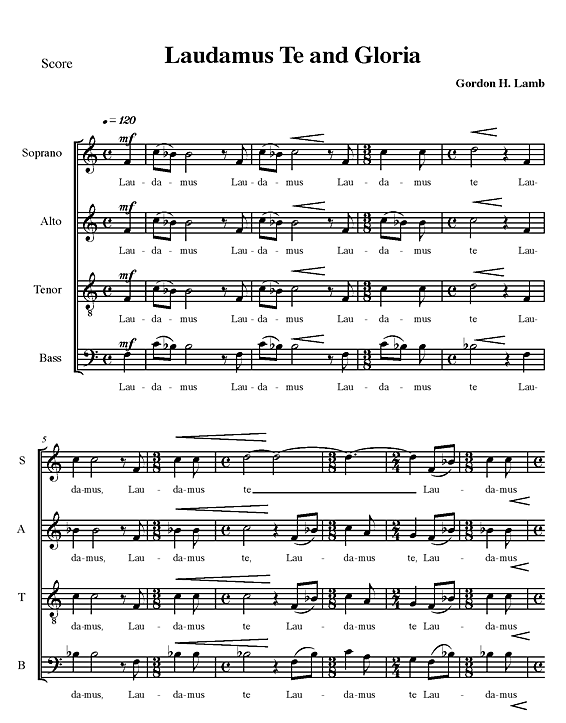
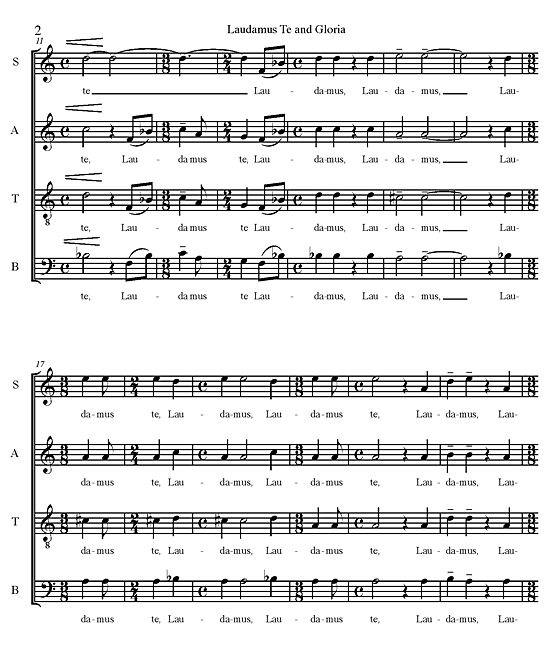
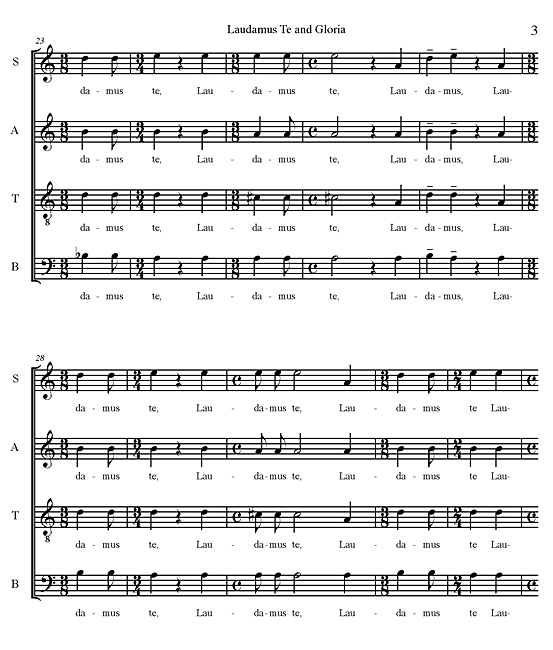
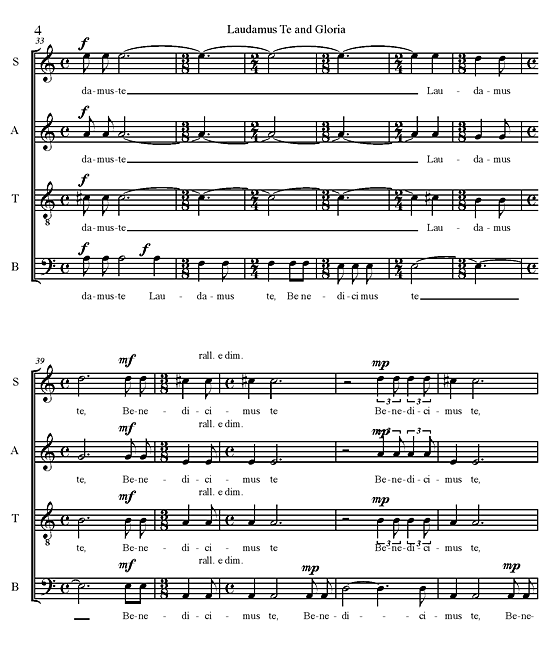
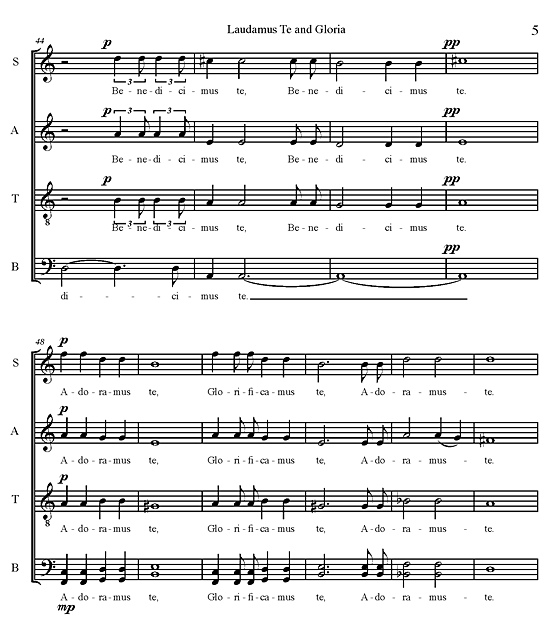
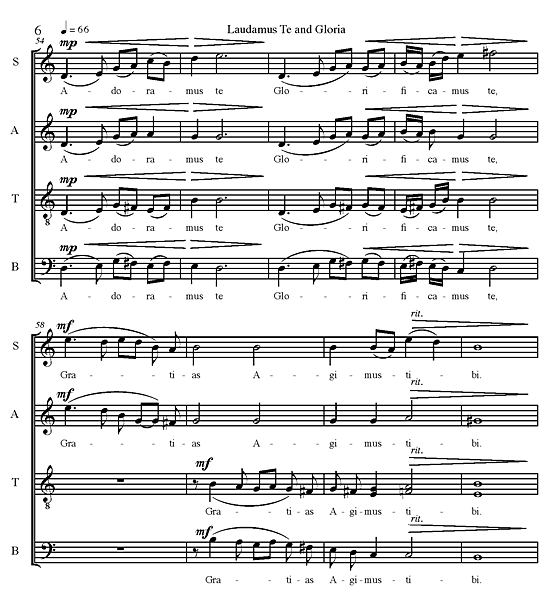
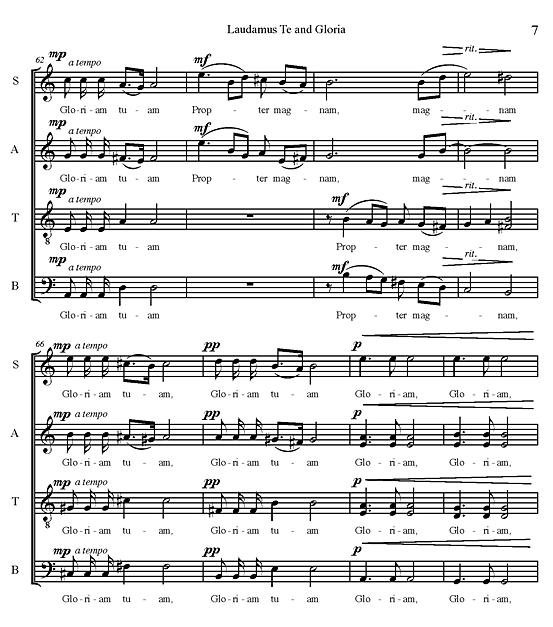
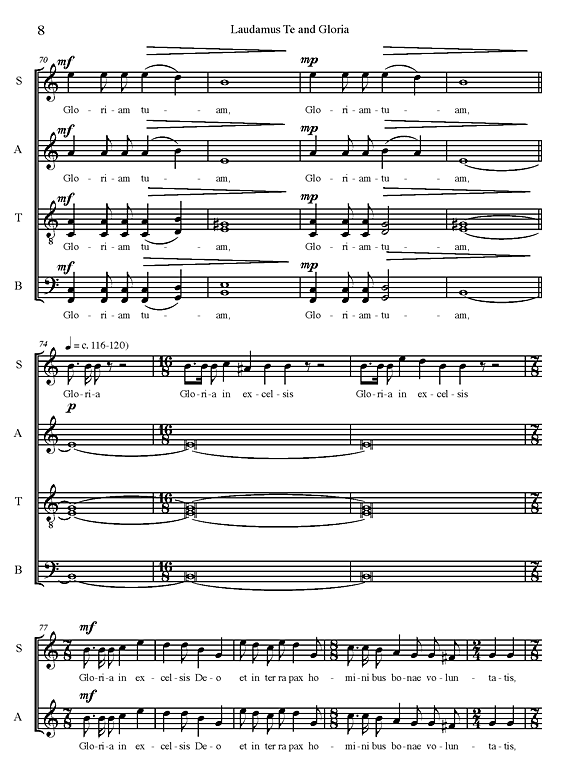
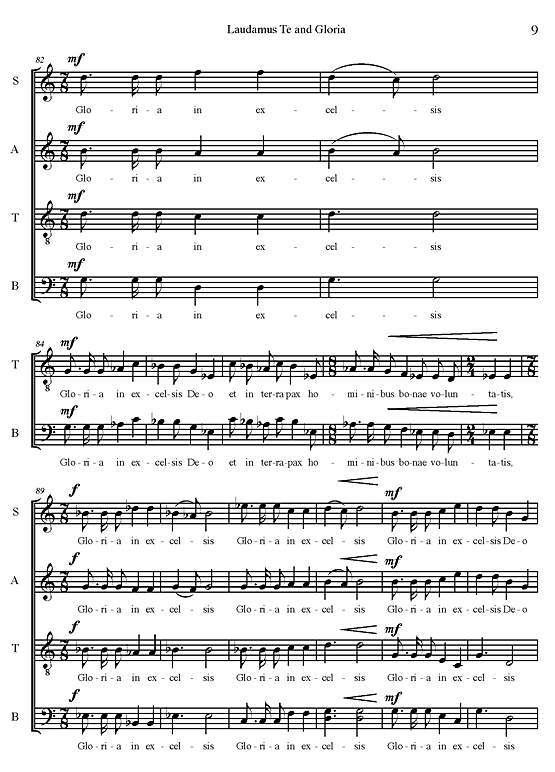
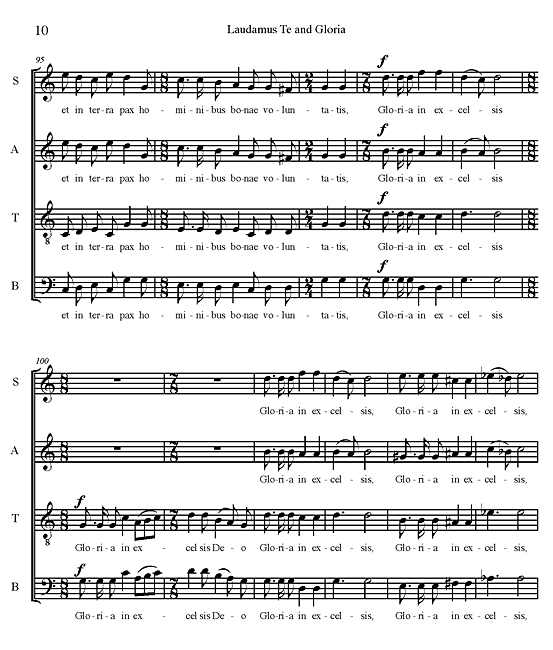
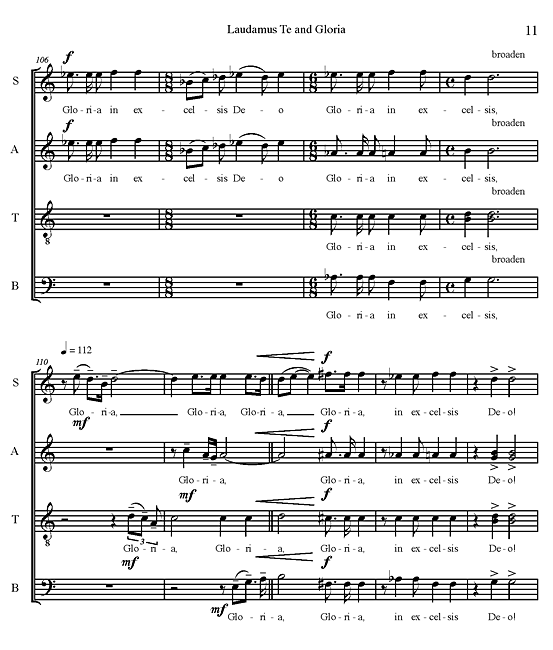
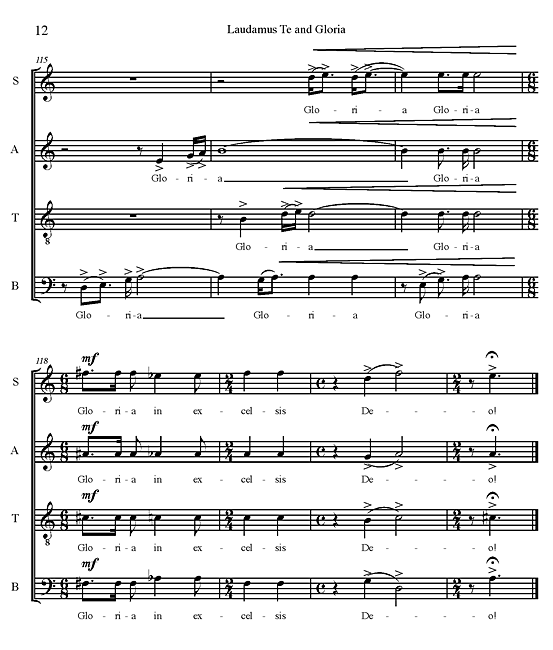
Following is one piece and one unison conduting exercise that include asymmetrical and changing meters, Make We Merry from The Attitudes of Christmas by Dunn, and a fast tempo, changing meter conducting exercise. Both serve as excellent conducting examples to assist in the development of gesture control and mental anticipation which are crucial to be able to successfully conduct such repertoire. Many twentieth-century and contemporary composers use a free flow of meter changes to create the unusual rhythmic stress they desire. Such changes also allow composers to play much more freely with word and syllable stress.
Make We Merry is the opening piece of a seven-part Christmas work for treble voices. The alternation of 2/4, 7/8, 4/4, 3/4 and at the end 6/8, 5/8, and 7/8 creates an exciting rhythmic drive, which culminates in an intense opening to the larger work. If performed alone it is complete in itself and is an ecstatic Christmas statement.
The 7/8 meter works perfectly to match the text "Make We Merry." An editorial note at the bottom of the first page indicates that conductors may want to conduct the 2/4 bars in one and the 4/4 bars in two. It also notes that the eighth note is constant throughout. Of course, the latter is crucial to the rhythmic coherence of the piece. Good gesture control is necessary for success and conductors should be reminded to conduct both the choral parts and the accompaniment. Too often the attention remains on the choral parts when the rhythmic importance is in the accompaniment.
The unison exercise was written for advanced students. It requires mental and physical coordination as well as anticipation. It demands what numerous choral works that contain changing meters demand, thinking ahead in a different meter than the one you are conducting. This exercise allows one to practice alone. It is also easy for two or three people to practice together as well as for a group to sing and conduct simultaneously.
Other works that include displaced accents or changing meters:
1. Festival Te Deum, Britten, Boosey and Hawkes
2. Rejoice in the Lamb, Britten, Boosey and Hawkes
3. The Way of Jehovah, Stevens, Helios, (Mark Foster)
4. O Lord Our Governor, Stevens, Helios, (Mark Foster)
5. Sing unto God, Fetler, Augsburg Publishing House, #1244
6. Make a Joyful Noise, Fetler, Augsburg Publishing House, #1476
7. Anthem of Faith, Diemer, G. Schirmer, Inc.
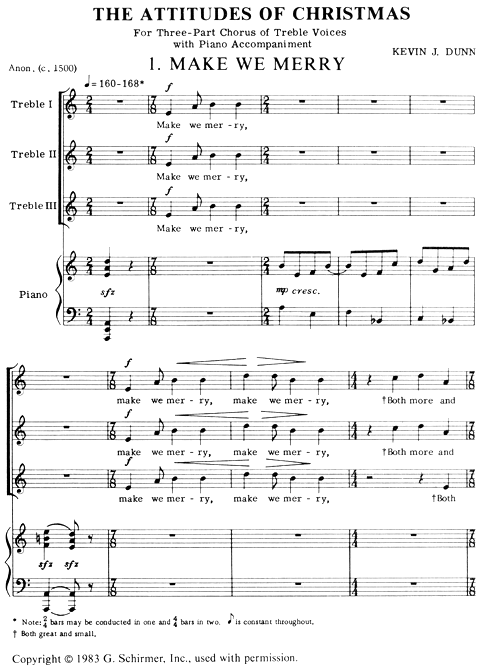
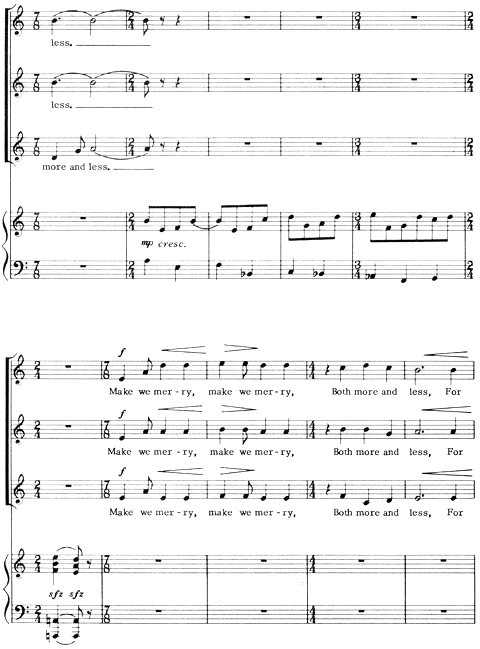
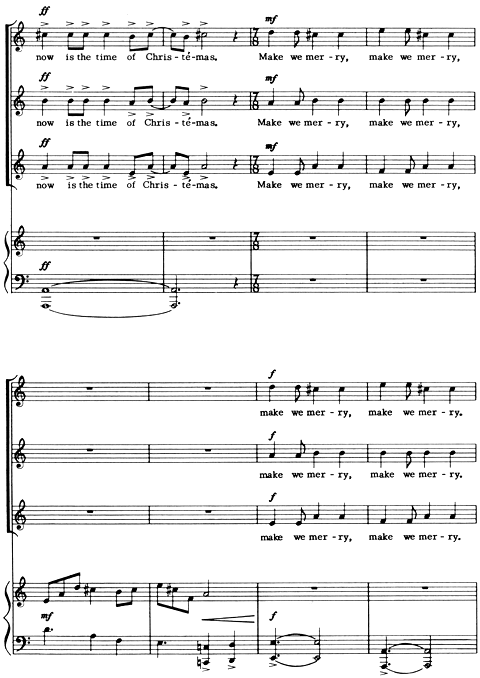
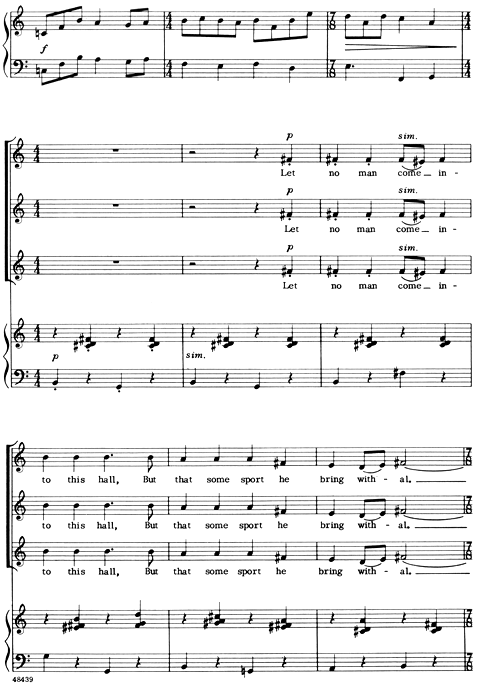

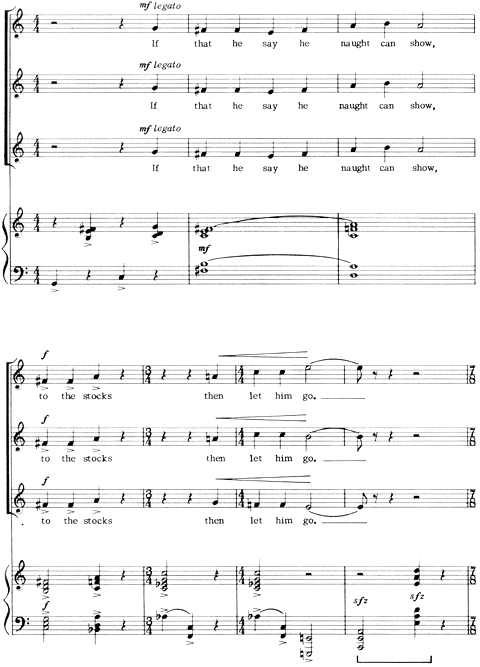
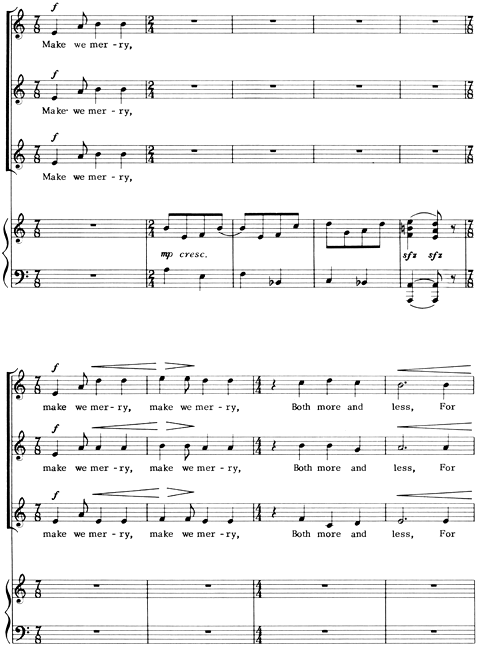
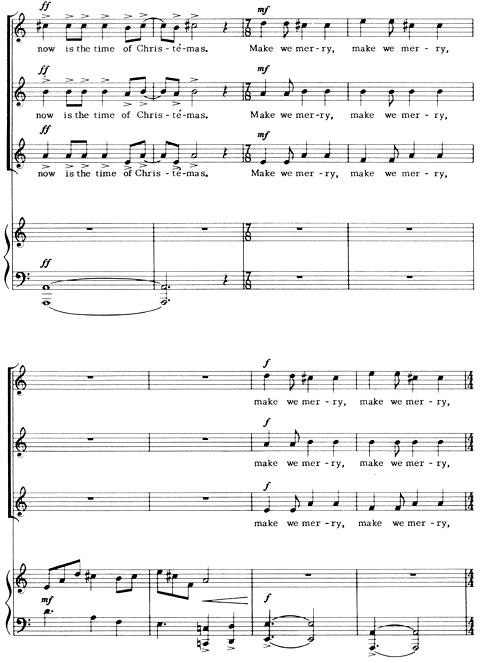
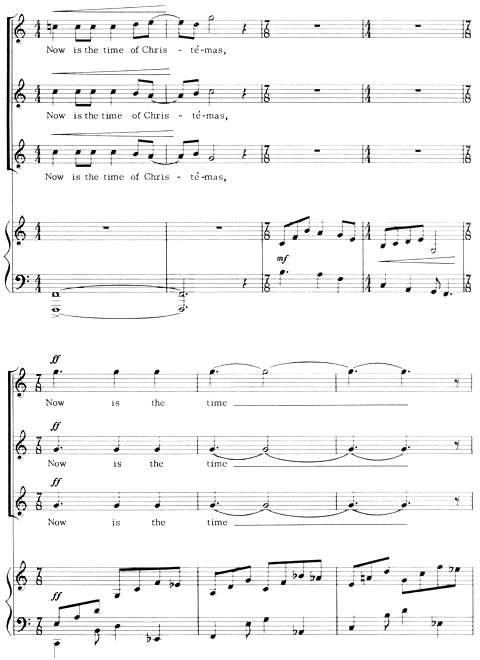
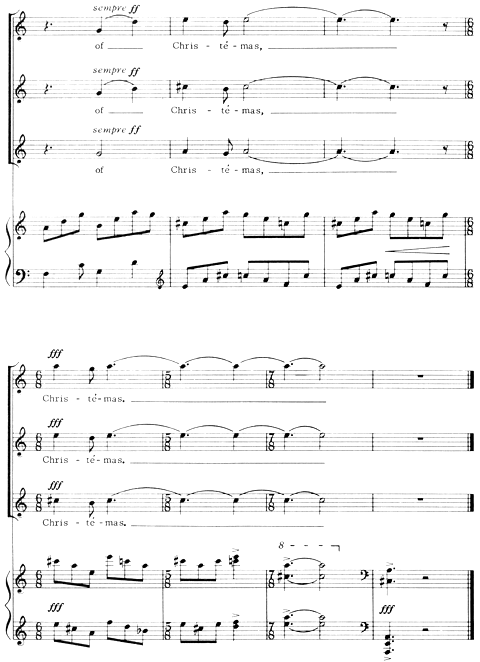
MAKE WE MERRY, by Kevin Dunn,Copyright 1983 by G. Shirmer, Inc. (ASCAP), International Copyright Secured. All Rights Reserved,Reprinted by Permission
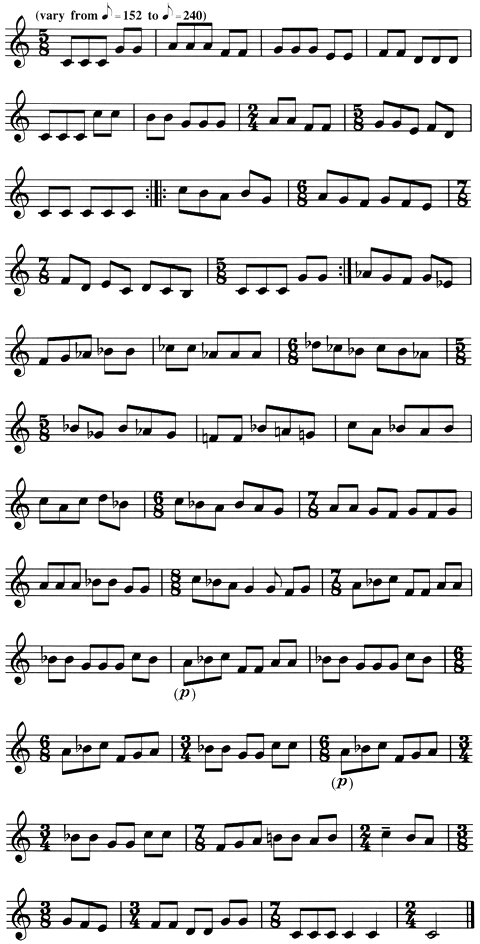

Notification Switch
Would you like to follow the 'Choral techniques' conversation and receive update notifications?